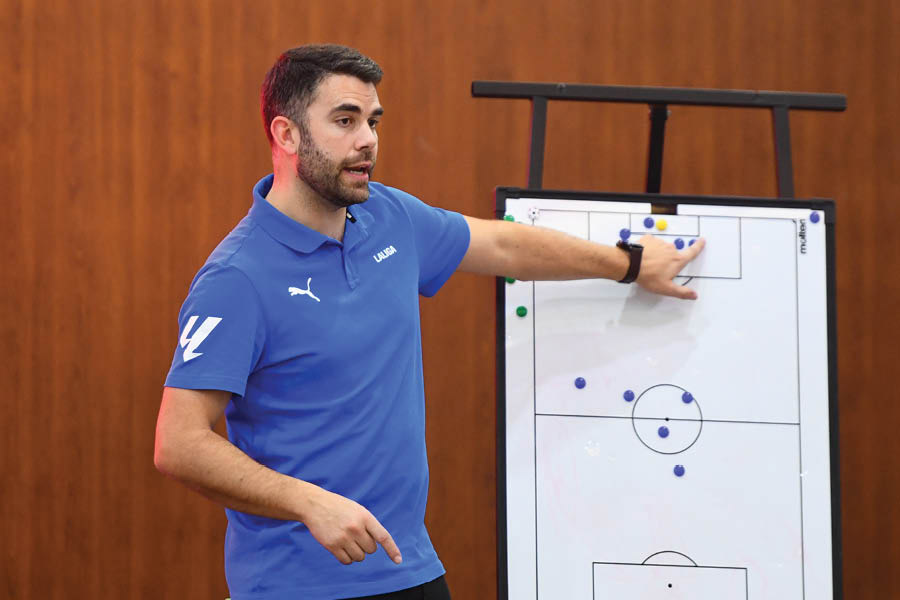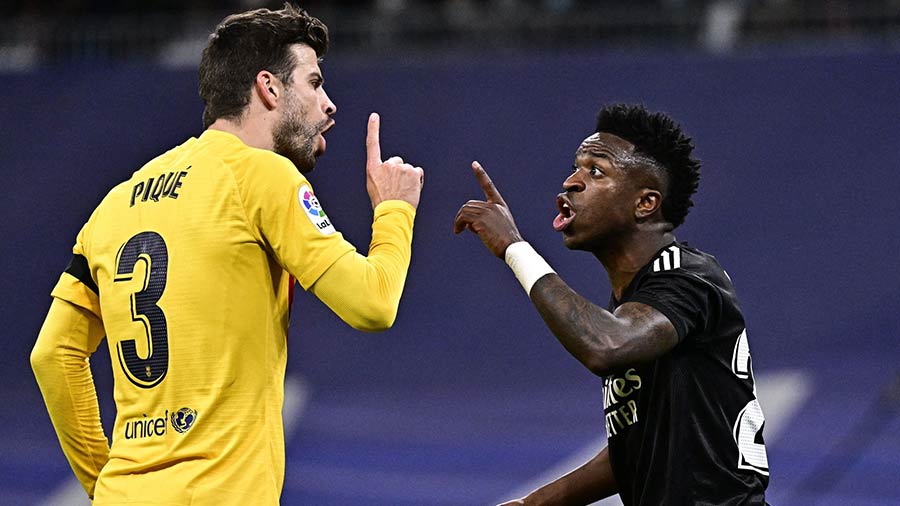Three out of the eight teams in the quarter-finals of this season’s UEFA Champions League (UCL) are Spanish, the most from a single country. This is no surprise, for Spain’s La Liga (the top division of domestic football) has dominated Europe for the best part of two decades, coinciding with the halcyon days of the Spanish men’s and women’s national teams. But this dominance has not just been about winning trophies, it has also been about stamping the identity of the Spanish way of playing — possession football with quick, penetrative passing, high defensive lines and intense pressure. Having inspired countless teams to play the Spanish way across Europe, La Liga is now helping shape the style of football in India, where the fandom for the beautiful game far exceeds success on the pitch.
LLFS focuses on the technical, tactical, physical and psychological aspects of football

Saul Vazquez highlights how ‘building talent from scratch’ is La Liga’s speciality La Liga
As of March 2024, there are 31 La Liga Football Schools (LLFS) centres in India, with 13 in Mumbai, four in Bengaluru, three in Pune and the rest spread across Delhi NCR, Haryana, Amritsar, Vadodara, Surat, Bhubaneswar and Ranchi. Following the signing of an MOU between the Government of West Bengal and La Liga in September 2023, LLFS centres are also expected to crop up in Kolkata in the near future. Currently, more than 21,000 youngsters receive training at these football schools, where more than 800 coaches teach them how to play in the manner of Barcelona, Real Madrid and other Spanish clubs. Several La Liga sides such as Sevilla, Real Betis, Celta de Vigo, Deportivo Alaves and Cadiz sponsor the LLFS centres in a bid to give young Indian footballers access to the best facilities and faculties.
“LLFS in India is a long-term project that focuses on disseminating the process of Spanish football from multiple standpoints — technical, tactical, physical and psychological,” says Saul Vazquez, a senior specialist in sports project development and former technical director of LLFS in India. “If you look at what makes La Liga clubs stand out, it’s the fact that we believe in developing talent from scratch. Barcelona, Valencia and Athletic Bilbao are all great examples of that. LLFS is about passing on that expertise to Indian coaches (often through collaboration with their Spanish counterparts) by combining the best methodologies implemented across La Liga clubs,” explains Vazquez, who maintains that Spanish football remains in a league of its own, wherein “some mid-table matches can be as exciting as a UCL encounter”.
Besides LLFS, La Liga frequently provides scholarships to prodigious Indian talents to come and play in Spain. One of the beneficiaries of this has been 17-year-old Kajol D’Souza, a product of LLFS who has trained in Madrid and already represented India at the FIFA U-17 Women’s World Cup. “In terms of playing football, Spain is still the best in the world, and the growth of talents like Kajol makes us extremely proud,” says Vazquez. Despite the exodus of household names such as Neymar, Cristiano Ronaldo, Lionel Messi, Luis Suarez and Karim Benzema from La Liga in recent years, Vazquez is confident that the La Liga brand remains stronger than ever: “It always helps to have the stars in La Liga, and we still have many of them now (Robert Lewandowski and Jude Bellingham, for instance; with the tantalising possibility of Kylian Mbappe joining Real Madrid in the summer). But the USP of La Liga is that we make our own stars.”
Maharashtra, Karnataka, Kerala, West Bengal, Goa and the Northeast are La Liga’s biggest markets in India

Aakriti Vohra explains how La Liga has significantly expanded its brand-building in the Indian market La Liga
Interestingly, in spite of some of the world’s most recognisable footballers leaving La Liga since 2018, the league’s social media following in India has grown manifold, from 300,000 followers to more than seven million over the past five years. A big reason for this is La Liga’s glocalisation strategy, as part of which the league has a dedicated team based out of India that believes in localised branding. “It’s all about making Indians connect with La Liga. We understand that cricket remains the number one sport in India, but football is catching up. Plus, we’ve found a way to bridge the gap between cricket and football by appointing Rohit Sharma as India’s La Liga India ambassador,” describes Aakriti Vohra, La Liga global network delegate in India. Vohra doubles down on how La Liga has been expanding its reach in India by organising El Clasico screenings in Indian metros (including in Kolkata in 2018) and leveraging its connection with CVC Capital Partners, which is a major investor in La Liga and owns the Gujarat Titans (GT) in the IPL.

Girona, La Liga’s biggest revelation this season, are increasingly popular in India Getty Images
According to Vohra, La Liga’s biggest markets in India (not in any order) are Maharashtra, Karnataka, Kerala, West Bengal, Goa and the Northeast. In the past couple of years, Uttar Pradesh has also seen an upsurge in La Liga viewership. While most of the Indian audience tilts towards Barcelona or Real Madrid in terms of allegiance, the 2023/24 season has seen a lot of interest for Girona, who have enjoyed a sensational domestic run and should finish in La Liga’s top four. “That’s the kind of excitement La Liga brings. Nobody could have expected Girona to do what they’ve done. The fact that Girona were the first La Liga team to have a pre-season tour in India (back in 2018) has also bolstered their India connect this season,” shares Vohra, who does not rule out the possibility of more Spanish clubs touring India if “the right commercial partners can come on board”.
By combining grassroots development in India with rigorous brand-building, La Liga has achieved a synergy between identity and impact that not even the Premier League has been able to. Going forward, it is this two-pronged formula that is likely to keep expanding La Liga’s Indian footprint irrespective of how many Champions Leagues are won by the likes of Real Madrid and Barcelona.

